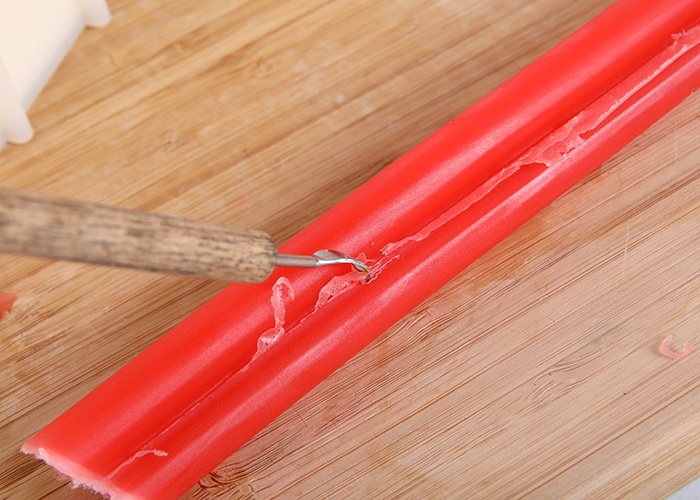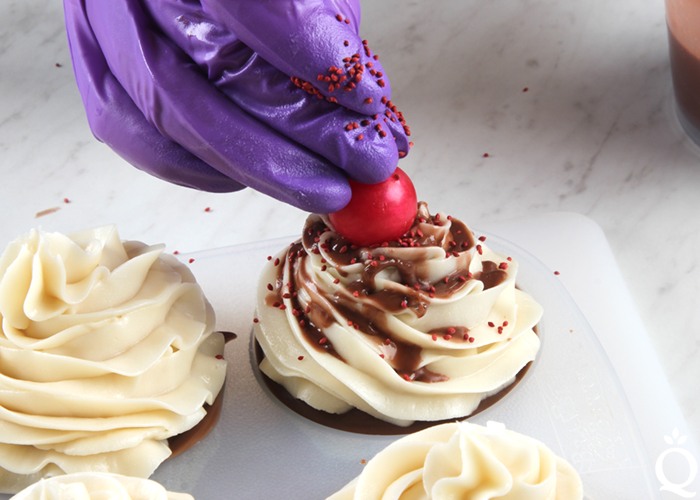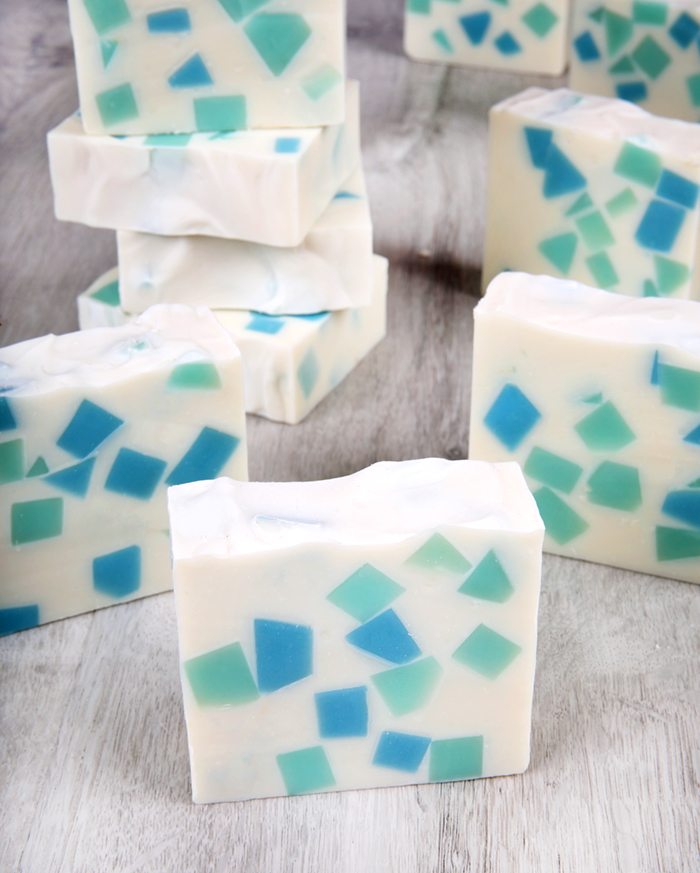Embeds are a simple way to create an interesting design. You can add whatever shape you like in or on top of soap - circles, moons, stars, etc. It's also a great way to use leftover soap scraps. Find tips for working with cold process and melt and pour embeds below, and get the supplies you need here.
Melt and pour soap
For this method, you need a few tools to get started.
- 99% isopropyl alcohol - This pops bubbles and helps the layers adhere. Spray it all over the embed and the layer below to ensure everything sticks.
- Infrared thermometer - Temperatures are key. The soap needs to be around 125-135° F so it doesn't melt the embeds or layers below.
- Clean-up tool - This one isn't necessary, but it is handy to have. It allows you to clean off any excess soap from the embeds for a clean look.

Next, choose the shape of your embeds. We have several options, including moons, daisies, and stars. You can also pour the soap into a loaf mold and cut it into the shape you like, or use leftover melt and pour pieces.
If you're making the embeds the same day as the base soap, they need about 2-4 hours to fully cool and harden. If you're making them a few days in advance, wrap the soap in plastic wrap and store it in a cool, dry place to prevent glycerin dew.
When you're ready to make soap, cut the long embed to fit the mold or keep the smaller embeds nearby. Pour a thin layer of base soap into the mold and allow it to cool and harden for 10-20 minutes. Then, pour another thin layer of soap, spritz the embed and the soap in the mold with 99% isopropyl alcohol, and place the embed where you want it. You may need to hold it in place for a few seconds. Finally, pour on more base soap until it's covered. See that technique in the video below.
Melt and pour and cold process soap
If you're short on time or if you like the transparent look of melt and pour, this is a great option. The key is to use LCP Clear and LCP White Melt and Pour Soap Base. They have less glycerin than our regular bases, so they have little to no sweating. That means they're less likely to shrink or morph in cold process soap.
Another key is to keep lye and oil temperatures low - around 110-120° F - to keep the embeds from melting. When the soap is in the mold, keep it uncovered at a cool room temperature for the same reason.
Embedding is easy - just make sure your trace is thick enough to support them. You don't need to spray alcohol on the embeds, just pop them in.

Cold process soap
This method requires more preparation. Cold process embeds need 1-2 days to harden in the mold. It's helpful to use fresh soap and the same recipe for the base and embeds because they'll shrink at the same rate in the shower. You may notice some irregularities if you're using older soap or a different recipe, but it's mostly an aesthetic issue. It will still feel great on the skin!
From there, you can embed the soap like normal. You don't need to worry about temperatures like you do for melt and pour, so feel free to gel the soap if you like.
We recommend trying all 3 methods to find your favorite! Get started with these projects.

